***This post is a part of my series where this year I will be highlighting all of the different states native frogs and toads. Check out this page to see all of the United State’s native frogs broken down by state. ***
Here are the frogs and Toads that can be found in New Jersey:
American Toad (Anaxyrus americanus)

Photo 1
The American toad is mainly nocturnal and is most active when the weather is warm and humid. During the winter, the toad will burrow deep into the ground below the frost line. As the frost line gets deeper, the toads will burrow deeper beneath the ground. They can be found in all of the northern region except for Monmouth County within New Jersey.

The toad has a high musical trill which can last upwards of 30 seconds. American toad is highly terrestrial and can only be found in the water for a short period while breeding and laying eggs. Below is a video that shows the American Toad calling.
Fowler’s Toad (Anaxyrus fowleri)
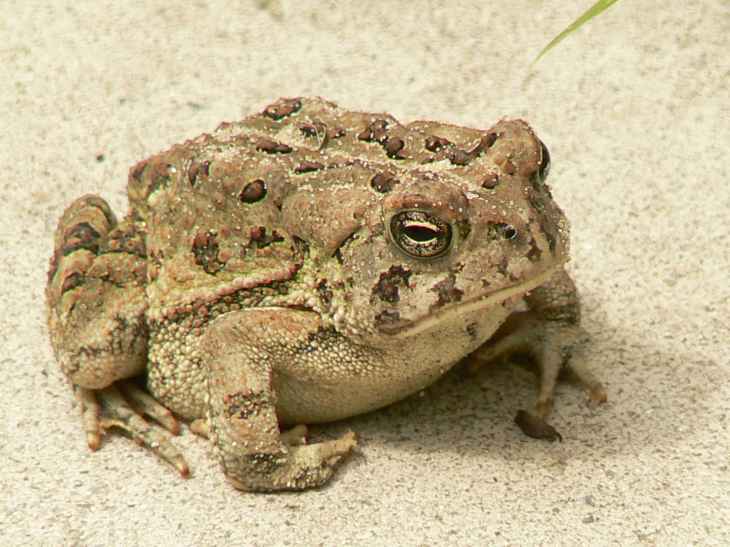
Photo 2
The Fowler’s toad is usually brown, grey, olive green and rust red in color with darkened warty spots. As these toads become adults, a pale stripe will form down its back. The belly is usually whiteish with one dark spot. These toads are abundant throughout southern New Jersey and rare to see in northern New Jersey due to the American Toad’s presence.

This toad has a long, loud, high pitched W-A-A-A-H-H-H call. Listen to it in the video below! It is said that they can be mistaken for a herd of sheep calling in the night. The Fowler’s toad will make a series of quick, short hops as the American toad will make a few larger hops. The fowler’s toad will breed late spring – mid August. The female can release 7,000 -10,000 fertilized eggs which will hatch 2-7 days later.
Gray Treefrog (Hyla versicolor)
Photo 3
The grey treefrog may range in color from green to brown to grey (as shown above). During the day, they may be found sleeping on tree branches or leaves. Their toes have a sticky pad which allows them to easily climb vertically up windows, siding, trees; etc. They may be found throughout the state except for the core Pinelands.

Female grey tree frogs may lay 1,000-2,000 eggs in clusters of 10-40. Tadpoles can be distinguished by their redish-orange tails. Male grey treefrogs have a short melodic trill that lasts only a second. They will generally call on warm and humid evenings between May & July. Below is a video of the Gray treefrog calling.
Spring Peeper (Pseudacris crucifer)
Photo 4
The spring peeper is one of Vermont’s smallest frogs measuring from 1″ to 1-1/2″. It can be distinguished by it’s dark colored “X”across its back. This frog is very common throughout the state of New Jersey. They can be found in a variety of habitats and breed in almost any freshwater source.

It’s chorus of a shrill high pitched call can be heard from up to a 1/2 mile away! Listen to its call in the video below. Similar to the American toad, these frogs spend most of its time on land and only are in the water to breed and lay eggs. Like most tree frogs, the spring peeper is nocturnal and loves to hunt ants, spiders and other small insects during the evening.
New Jersey Chorus Frog (Pseudacris kalmi)

photo 5
This subspecies of a chorus frog is 3/4″ – 1 1/2″ in size. The New Jersey Chorus Frog can be found in swamps, moist woodlands, and the areas surrounding marshes, bogs and ponds. It is quite common within the southern portion of New Jersey but is not common within the core Pinelands.

There is little difference in the identifying characteristics of the Western Chorus Frog, Uplands Chorus Frog and the New Jersey Chorus Frog, except for the calls and range. Listen below to the New Jersey Chorus frogs call.
American Bullfrog (Lithobates catesbeianus)

Photo 6
The American Bullfrog is the largest frog in North America. They are typically green or gray-brown with brown spots. They can grow up to 8″ in length and weigh up to 1.5 pounds. The bullfrog can be found near large permanent bodies of water with vegetation near the shorelines. They are common throughout New Jersey, but are absent from the acidic waters of the core Pinelands.

It has a very deep call which resembles the mooing of a cow. Watch the video below to hear! Both genders of the bullfrog croak. Their calls may be heard day or night between April and July.
Green Frog (Lithobates clamitans)

Photo 7
The Green Frog is abundant throughout New Jersey and can be found in almost every town. It is typically greenish-brown with dark mottling on its head, chest and under its legs. The throat color ranges to yellow for a male to white for the females.

These frogs can produce as many as 6 different calls – however the most distinctive sound is a throaty boink that sounds like a loose banjo string being plucked. Listen to the video below to hear!
Wood Frog (Lithobates sylvaticus)
Photo 9
The Wood frog is known as a brown, tan or rust colored frog with a dark colored around its eyes. Some call it a “robbers mask”. These frogs are found statewide, but they are rare within the core Pinelands.

Their call sounds like a quacking of a duck. Watch the video below to hear! Two interesting facts about the wood frog, is that while the frogs do not show any paternal care to their young, it has been discovered that tadpoles that have been separated from parents can pick their parents out and aggregate around them. Secondly, the wood frog is very tolerable to cold temperatures. These frogs can tolerate complete freezing of up to 65% of their body as they pump any water within their body to their extremities and at the same time pump large amount of glucose from the liver into their cells. This creates a syrupy sugar solution which acts as antifreeze within their body. Their blood will freeze, the heart will stop beating and all breathing and muscle movements cease until early spring as they begin to thaw and re-animate.
Southern Leopard Frog (Lithobates sphenocephalus)
Photo 10
The southern leopard frog is a greenish brown color and has 2 yellow lines down the back and one above the lip. These frogs can be found in shallow freshwater or slightly brackish water. They are usually found a powerful jump or two away from the water, however in summer they may be found far from the water where they venture for insects. They can be found throughout the entire state of New Jersey, however they are rare within the northern region.

The southern leopard frogs call sounds like a squeaky balloon or chuckling croak. Females may deposit 3,000-5,000 eggs in cluster within the water. Listen below to hear their call.
Pickerel Frog (Lithobates palustris)

Photo 11
The Pickerel frog looks very similar to the Leopard frog; however the pickerel frog has 2 parallel rows of squareish spots down its back. These frogs are very common throughout New Jersey except for the core Pinelands. They are often found near beaver ponds with dense vegetation.

As a defense the skin of the pickerel frog produces a toxic substance which makes them unappealing to most predators. Listen to the video below to hear their call. It is similar to the Northern Leopard frog, however it is shorter and faster, causing it to sound more like a finger running over tines on a comb.
Eastern Spadefoot (Scaphiopus holbrookii)
Photo 12
The Eastern Spadefoot has smoother and more moist skin than most toads and is speckled with very tiny warts. This species varies in color from tan or yellowish to dark brown without bold spots like other southern toads. They usually have 2 vertical light lines running from the back of their eyes down their dorsum creating a hourglass shape. The lines are usually more visable in males. The Eastern Spadefoot toad is found throughout the state of New Jersey.

The Eastern Spadefoot prefers dry habitats with sandy soil, but can be found in almost any habitat. Their ability to remain buried for long periods of time allows them to live in suburban and agricultural areas. These spadefoots spend almost all of their time buried under ground, with the exception of breeding time. During breeding time, the spadefoots emerge from their burrows and the male will let out a short explosive “wank” call which sounds like a call of a crow. Something odd about these guys is that some people believe that the Eastern spadefoot smells like peanut butter.
Cope’s Gray Treefrog (Hyla chrysoscelis)

photo 13
The Cope’s gray treefrog is smaller and smoother skinned than the gray treefrog. The gray treefrog and Cope’s gray treefrog can be difficult to tell apart during breeding while they are both mottled. However, most of the time the Cope’s gray treefrog has a solid lime green colored back. These frogs were listed as an endangered species in 1979 due to the loss of habitat and limited distribution. They can be found in Cape May and southern Cumberland, Ocean, and Atlantic Counties in the Southern Region.
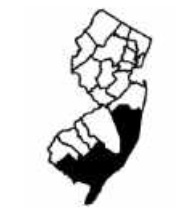
Another way the Cope’s gray treefrog can be distinguished from the gray treefrog is by its call. The Cope’s gray treefrog’s call is short and raspy. Listen to the video below to hear.
Eastern Cricket Frog (Acris crepitans)
photo 14
The Eastern Cricket frog measures an average of 1″ in length with the females being slightly larger. These frogs can jump a surprisingly long way (5-6′) for their small size. They can range a combination of black, yellow orange or red on a base of brown or green. This frog is found throughout the entire state of New Jersey, except for the core Pinelands. They may be found near permanent water sources like slow moving streams, margins of lakes and ponds or around marshy areas.

This frog was named for its breeding call which sounds very much like a chirp or trill of a cricket repeated for about 20 beats or like 2 pebbles clicked together. Listen to its call below.
Green Treefrog (Hyla cinerea)
Photo 15
The green treefrog is slender frog that ranges from bright green to dull green with a white stripe down its side. These frogs can reach 2.5″ and can be easily frightened. They are typically found within marshes, swamps, small ponds and streams, but can also be found within brackish water sources. They can be found across the entire state of New Jersey, except for the core Pinelands.

On average, a female will lay 400 eggs. The male’s call is a single note repeated over and over sounding like a “queenk”. Listen to their call below. Breeding takes place May through July. It has been noted that the green treefrog will choose its prey not based on size, but based on activity level. With the most active being eaten first.
Carpenter Frog (Lithobates virgatipes)
Photo 16
The Carpenter frog is widely known for its dark brown color with (2) light yellow stripes on either side. This frog can be found within all of southern region except northern Salem, western Camden, Gloucester counties and the cape may pennisula as well as in southeastern Manmouth County.

They can be heard in April with a call that sounds like construction workers hammering, hence their name. Listen to their call below. Tadpoles are unique as they will remain a tadpole for around a year. The carpenter frog thrives in acidic water and as the wetlands water becomes less acidic, other larger frogs are now taking over their habitats.
Pine Barrens Treefrog (Hyla andersonii)
photo 17
This treefrog is bright green in color with lavender stripes and orange portions concealed on legs. The Pine Barrens treefrog can be found in the mid eastern portion of the state and appears to be limited to the acidic waters of the New Jersey Pine Barrens. Although the pine barrens have a limited distribution throughout New Jersey, they can be locally abundant within their range. This frog is listed as endangered within new Jersey.
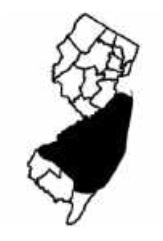
The Pine Barrens treefrog prefers shallow pools and temporary streams. This species can be found by the breeding calls in May-July. Their call sounds like a repetitive honking noise. Listen to the call below. After breeding, they return to a more terrestrial habitat.
Thanks for reading! Check out all of the United State’s native frogs and toads here.
Photo Credits:
Cover photo used by the CC0/public domain license. Text was added. See Original photo here.
- Photo from Wikimedia Commons used under the Creative Commons license. Photo taken by Brian Gratwicke. Original Photo Here.
- Photo from Wikipedia Commons used under the Creative Commons license. Photo taken by Perlick Laura. Original Photo Here.
- Photo from ADW used under the creative commons license. Photo taken by James Harding. Original Photo Here.
- Photo from Flickr Wikimedia Commons used under the Creative Commons license. Photo taken by Matt Reinbold. Original Photo Here.
- Photo from Flickr Wikimedia Commons used under the Creative Commons license. Photo taken by Anita Gould. Original Photo Here.
- Photo from Wikimedia Commons used under the Creative Commons license. Photo taken by Brian Gratwicke. Original Photo Here.
- Photo from Flickr Wikimedia Commons used under the Creative Commons license. Photo taken by Brian Gratwicke. Original Photo Here.
- Photo from ADW used under the creative commons license. Photo taken by James Harding. Original Photo here.
- Photo from Wikimedia Commons used under the Creative Commons license. Photo taken by Brian Gratwicke. Original Photo Here.
- Photo from Wikimedia Commons used under the Creative Commons license. Photo taken by Bob Warrick. Original Photo Here.
- Photo from Wikimedia Commons used under the Creative Commons license. Photo taken by Brian Gratwicke. Original Photo Here.
- Photo from Connecticut Department of Energy & Environmental Protection. Original photo here.
- Photo from Wikimedia Commons used under the Creative Commons license. Photo taken by Fredlyfish4. Original Photo Here.
- Photo from Wikimedia Commons used under the Creative Commons license. Photo taken by Andy Reago & Chrissy McClarren. Original Photo Here.
- Photo from Flickr Wikimedia Commons used under the Creative Commons license. Photo taken by Jarek Tuszynski. Original Photo Here.
- Photo from Wikimedia Commons used under the Creative Commons license. Photo taken by USGS. Original Photo Here.
- Photo from Flickr Wikimedia Commons used under the Creative Commons license. Photo taken by Florida Fish & Wildlife. Original Photo Here.
For more information:
- http://www.nj.gov/dep/fgw/ensp/fieldguide_herps.htm
- http://www.state.nj.us/dep/fgw/ensp/pdf/frogs.pdf
Like “The Frog Lady” on facebook or follow aapanaro on instagram to get some sneak peeks into the frog lady’s frog room!



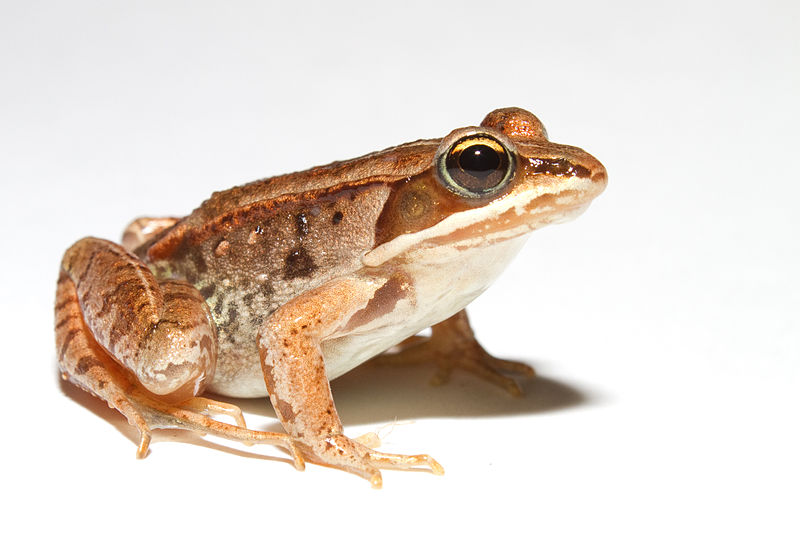
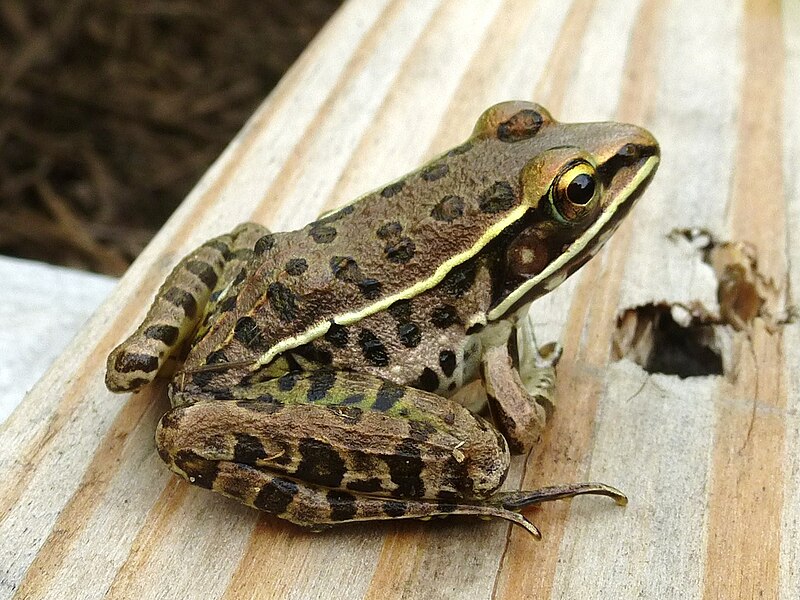
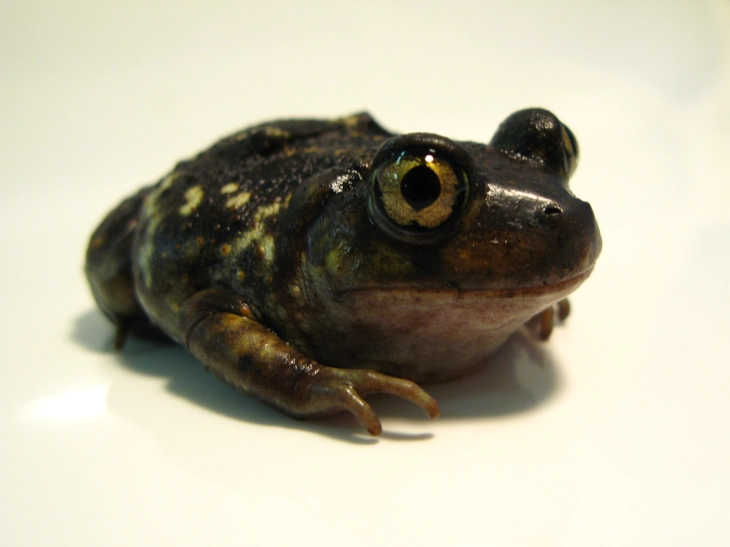


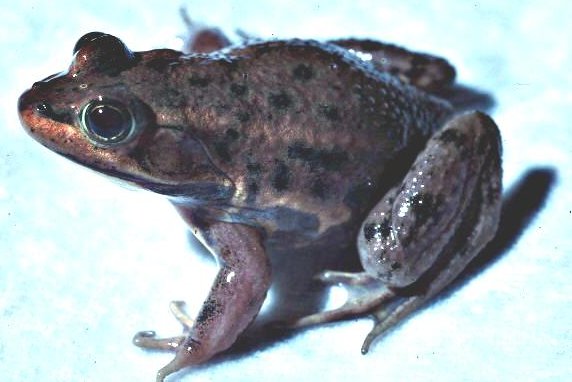
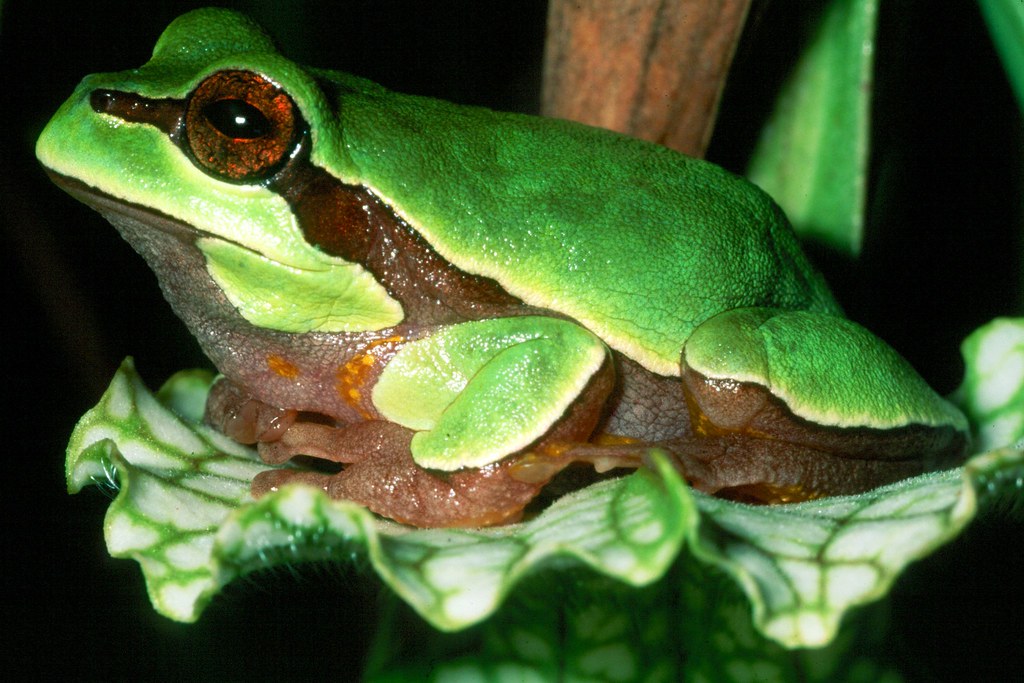


I am truly amazed by the variety and diverse characteristics of all of these critters. Wow! Love listening to their various calls.
Lee
Tossing It Out
Great post, Allyse. That’s a lot of frogs for one small area. Fun to hear them here, and to see them as they’re croaking.
Thank You Post
Lots of great info on New Jersey’s frogs, thank you. Now I can know what frogs are in my woods. Sorry, their woods.
I’m in central jersey in the burbs and I created a small wildlife pond I don’t want fish just some snails and frogs but I’m not really sure where I could get native tadpoles and which ones would be best for my pond. Seems the only ones I can usually find are bullfrogs and my pond might not be big enough for them it’s 12 ft wide 4 ft length and deepest spots are only lil over 2 feet after adding soil and rocks
August 6, 2019 Hi Eric, We have a small wildlife pond on our property in Somerset County. The green frogs have multiplied this season and there are too many for the size of the pond. We need to decrease the population. You are welcome to come over and take as many as you like. We will have to catch them using a net on a long pole (we have done this before) and place them in a tall pail (we have one) with a lid made from netting for transport. They are all very beautiful with different shades of coloration from the genetic pool that has mixed over a period of three years we have lived here. Some are the regular green color, some are darker olive green, some are yellow-green. Their leg markings have reptile pattern. They can jump at much as four feet! We do not feed them. They find all the bugs they need to grow. At night some leave the pond and hunt in the yard. They return to the pond. By day they sit, swim, and jump around in the water. They all have the beautiful gold circle around the eyes. They are cute and you can enjoy their songs. Our pond is also not deep yet the frogs winter at the bottom. We keep a small heater on the surface ot the pond sometimes if the weather drops to where the water will freeze. This heater (a small round disc shape) heats it enough in that spot to keep it from freezing. All the frogs survive and we have 20 goldfish that also survive. We started out with just 10 frogs and now there are at least 30. Please email me so that we can connect and give you the frogs you want and at the same time. Thanks, Emily & Paul
Hi Emily and Paul. I ordered like a hundred green tree frogs and peepers earlier in summer online and a couple bullfrog tadpoles but noticed a few frogs in pond that might have just showed up Not even sure what type they are. We have seen up to 4. They might have ate the other frogs not sure but haven’t seen others. We also added guppies for mosquitos and now we have tons of them. I might be interested in some frogs and probably more just seeing your pond and how to improve mine. We are in Hamilton New Jersey.
That’s interesting and exciting Eric. Experimenting is fun. Good luck with your wildlife project. Since your also an enthusiast like us, we’d welcome you visiting our pond. This Month of August is good. Are weekends or weekdays best for you and what time? We should exchange phone numbers to iron out details. Take a photo of your pond and text it to this number. Mine is 908-625-5852. Thanks. Emily
Hey Eric-
I am sorry I missed your original comment. Please don’t go out and find or buy any additional frogs for your pond. In regards to online bought frogs, they could be infected with Chytrid or Ranavirus which could wipe out majority of the local frogs just from 1 infected frog released. Native and Local frogs will naturally find the pond and then they will stay in the area. Any frogs not from within a couple miles of you will have different pathogens, which may be detrimental to the local wildlife and any further away can introduce genes that are not beneficial for the local populations (as a form of outbreeding depression).
Other than the affect on the local wildlife, it is illegal to purchase or possess native species other than green or bull frogs (In New Jersey). At the very minimum the maximum green and bull frogs to catch for one day is 15 (nothing can be caught between April 1 -June 30), otherwise a permit will be required.
This is my interpretation of your state’s code, here is the document so you can read the requirements for yourself : https://www.njfishandwildlife.com/pdf/2018/fishcode18-19.pdf
In general for the pond, as there are fish in it, there will be less frog species that will find the pond acceptable so that could be why they are leaving. Many frogs prefer fishless ponds.
I would take Emily & Paul’s advice about visiting to see their pond and its success to learn about it, but I would not recommend buying or taking frogs from anywhere other than the closest pond to your pond.
In Washington twp Morris co .. is this one a Fowler’s toad?
https://photos.app.goo.gl/mm7t6vRCx1Lhz6Br5
Looks like it is! Good eye!
That’s a beautiful toad photo!
>
Thank you.. Here are more from our yard
https://photos.app.goo.gl/xC8dCw7w21GYoJZ58
Nice variety of frogs! I bet they love that pond!
We were surprised to see the hundreds of tadpoles that were in there .. our first year with it .. but always have tree frogs on the house .. the one year maybe 2 years ago .. swear it was the end of the world coming.. house was covered in them .. love the way they sing in spring and after rain
I found a little grey frog holed up in a closed patio umbrella on my second floor deck two weeks ago. I have a cat I let out on the deck so I took the little guy out on some dense flower beds along the side of my house and let him go. Well today, approx two weeks later, I once again found him hanging out inside my patio umbrella that I had closed two nights prior because a storm was coming. My second floor deck is a pretty high climb for him lol. Why does he like it there? I’m assuming it is the same frog. Was it okay for me to remove him and put him in the bushes?
I have lived in the woods in south jersey all my life and thought I was familiar with all toad and frogs. There is a lake in the woods behind us. Today after a heavy rain and cooler weather I found 12 dead frogs in my pool I can’t identify. So sad. They look like a bullfrog, but very smooth, shiny skin. They have pale spots. Long toes. Cream stomachs. About 3 to 4 inches long with legs extended. May I email you a photo. My grandkids and I are so curious to know the type. Thank you, Donna, Ellie and Everett.
Feel free to contact me here https://thefroglady.wordpress.com/contact/ and it will send an email. I will then follow up via email to request the photos.
I’ve caught many toads and sizes, keeping similar sizes due to feeding made easier. Anyway I w like to keep 10 realistically probably just 6… I get attached easily. Since I was walking I’ve been a nature buff, my dads best fishing buddy started at 3 1/2:) 4 am off we went! Now housing my toads won’t they want to hibernate? Several I need to dig up to feed… they are actually very fat… anyway what is the smallest housing say for 6-7? Crickets get pricey and having to drive to get them and hope they w have any. How do I attract crickets on my own? Why can’t they eat the black ones found in the same habitat I found these guys. Can I boil water a day in advance rather than bottled water? I don’t always have em on hand. Any suggestions or am I just crazy trying to keep these critters ? No BS I’m 63, most friends have gotten used to me and my surprises… just now in an apartment and my roommate not much of a handy man🤨 … but I may find a friend who w b willing to build something… right now in a large plastic tub. They eat out of my hand and that is just darling… using cardboard egg crate as appts, but keeping fresh dry dirt it’s changed a lot. Sooo am I to stop digging the ones that seem to want to hybenate? Or is it to early yet. Some seem to be enjoying life on a twig and show no interest at Hibernating. Some toads were brought from my house w burnt to the ground😢 others found on road here where construction was going on… well 2 we waiting at front door 2 different times🙈 ! Once w a baby turtle… wanted to keep him too, but I’m not keen on snappers… any information w be helpful, thank you so so much. Hey ummmm I’m just gonna ask, I’m looking to adopt a puppy dog… buried my buddy😢😢9/11/20, bless his heart! Thank GOD all the time he hung in there as I bounced from motel to Motel ! He was such a joy, company, my fuzz butt whom I miss horribly. Knowing he was up in age, I could not find myself searching for a new buddy while he is by my side🙈😢. Breeders make it easier to buy from:( I cannot afford a breeder but number one so many need adopted! Ms Frog Lady🙏🏼 I always thought I’d have / rescue a French Bulldog.. signed my life away in forms, THEN they w inform you if the feel they have found a better home… poof your heart c b broken in an instant 🙈🙈I’m really down w broken spirits/ hopes I’m willing to drive say 100 miles if need be if I were so lucky. I’m wishing for a French Bulldog pup… even 6-8 months ya know. Boston Terriers are as true and loving I had one 14 years! Like any ideas, no plan to ask this at all… I’m exhausted about to fall asleep and I might ask anything of anybody tired.. kiddingly. Saw your sight, so your an interesting woman and I like you already. G night
Hey Kathy- It is not recommended to keep wild caught toads in captivity as they may have a hard time adjusting. You will need to look into your local laws as to the number they will allow for wild caught amphibians. Toads should eat a varied diet so they could be fed gut loaded crickets, wax worms, earth worms and night crawler..
As far as housing goes, toads are actually pretty active and may not get along well with others. Males fight and sometimes the females will fight as well. I would keep a pair in a 40 gallon to give them the space they need or a 75 gallon for 2 pairs. It is not recommended to keep them in groups though. Most toads will burrow during the day as they are nocturnal. Unless you lower the tank temperature, they wont hibernate, but may eat a little less than in the summer.
I just wrote a long comment to you,new phone I hope I’m not messing this up. I w re put my Email then need sleep… and pray I hear from you! Sincerely Kathy
Hi my frog lady friend:) wondering if your not receiving my comments and concerns…609 405 0004, house burned down and after a few months I’m in appts w a caring elderly friend who was diagnosis recently w prostate cancer again, started chemo so I w be caring for him and he does seem strong, very negative which I’m working on. Life is to short, thankful church is opening/ tomorrow bible warfare Loop group after 6 months starts again! Bob needs GOD, so we can be happy and hopeful God can take our troubles and I am getting back to being the happiest person I know… been a roller coaster… so back to my hopping friends that make me smile, I want to have info to where they survive and it’s great inside to me I literally saved there lives from certain death… 🤨 I have to oppologise for leaning on your shoulders… u may just tell yourself she needs not ask out of the box inquiry… I’m not a loose cannon I promise… I felt compelled to voice myself… your unusual and I’m impressed by your love for toads… some w look at us like… really? My friends just grinned! Never boring… ps… I am a willing heartfelt individual to help nature/ people. I am limited lately, but looking to be involved in anyway … for you.. even… ok I w stop… concerns to make a nice living happy habitat for these toads… I have an interesting story you w love to hear someday maybe… about thousands of tiny beautiful frogs after Sandy my pool became welcoming to a rare bread of these frog… I kept big branches in pool for shade , and they prospered WELL… I was surprised they were rare, and the law c have gotten involved 🙈 my son in law saw these beauties, he being an architect/ well educated:. Thankful I provided what they needed and thousands now live in the woods, w a variety a spring peepers, all types, so cute! Loved hearing their songs!
Would you have spawn or eggs that I can transfer to my pond and large yard? I’m surrounded by mansions and landscaping and no frog will ever find my pond otherwise. Thanks if you can help!
Can anyone please tell me where I can take the tree frog and small wood frog I found in my kitchen and basement? I have to move but I can’t free them in the dead of winter, in 2 feet of Nj snow. I’ve nursed them into healthy shape and I can’t remove native species from Nj. Help!
You are going to want to contact a wildlife rehabilitator. Here is the current list of NJ rehabilitators. There is only one that states that they accept amphibians, but they will be able to direct you further on where to go with them. https://www.state.nj.us/dep/fgw/pdf/rehab_list.pdf
have always wanted frogs on my yard and until now thought it unfair to bring them in but last year I made a pond for myself and would love to help out frog populations by letting them enjoy the yard. People say they will come but I am SURROUNDED by MacMansions, roads, etc. I have a large yard and many trees too. How can I get native NJ frog eggs or spawn? Thank You
I thought the same thing about my pond. But they really do find a way to get to the ponds. I had green frogs move in just a month or 2 into first season. Now my pond going on 3rd season has bullfrogs green frogs and copes grey tree frogs so far. Have the proper habitat they will come and thrive
Wow this is the most interesting thread I’ve ever read! Just wanted to pop on to say thanks to all for the incredible info.
I’m an Aussie who grew up surrounded by frogs and other wildlife. Am always trying to find it for my kids to experience. Now we live in NJ I’m saddened by the amount of pesticides my neighbors use. Nothing lives on those lawns so we never see a bee, lady bug, worms or frogs. I thought we’d make a meadow garden and pond to try to attract the native animals so this post is part of my research.
So heartening to read such enthusiasm for nature♡
Hi Michelle, If you plant it, they will come… NJ is teeming with wildlife. All you need to do is provide the native flowers that attract the hummingbirds (put a feeder with sugar water out first, then plant the flowers they love or buy them in a pot and hang them “fly level” from a bird feeder post. Bees and butterflies will arrive for the flowers they prefer. My pond hasn’t any filter — it’s man made but nature maintains it well. We clean it of debris and use a net in the fall to keep leaves out. Frogs reproduce in it. A toad arrived last year. After five years, goldfish reproduced and now we have 70 babies (that was last season; they’ve grown up now; some medium sized, some less than medium sized. The adults (parents) are still alive. Orange and dark golden brown have combined to make a varied genetic mix of colors: white with orange, orange with black, pure dark brown, and more varieties. I have never fed the adults (they survived on whatever they found on the plants and rocks), but I decided to feed the babies flakes of gold fish food (no colors or artificials). I felt they needed special nourishment to survive and grow well. I enjoy taking care of them. We have yellow iris growing on a mud bank in the pond that the hummingbirds drink nectar from in late May – early June. It’s a joy to sit in the gazebo and watch the hummingbird fly from flower to flower. I planted trumpet vine on the fence for them and honeysuckles on the arbor; I prefer to not use sugar water in a feeder because I have to clean it so often in the summer; I don’t want that responsibility. Just make sure you properly fence your flowers so that the wild brown rabbits will not devour them. A few years back, I learned the hard way — a rabbit arrived when I was not outside and had a feast. Since then, we had a fence installed with netting at the bottom so they cannot squeeze under it (like Peter Rabbit who squeezed under the fence into Mr. McGregor’s garden). I think it happened like that in the story. He might have also hid in the watering can, but the NJ rabbits don’t. They will hide under a shed and burrow holes, as will groundhogs, who also eat green plants. They eat crab apples too. And beware of the Blue Heron. However beautiful they are, they have visited my pond a few times and attempted to eat my adult goldfish. A double row of fishing line attached at waist level (equivalent to their height) around the perimeter of the pond should prevent their walking into the pond. Good luck, have fun, and can we post photos here? It would be fun to share pond and meadow photos among the members of this group. Emily
When working in my yard around noon I heard a call coming from a hedgerow [fairly dry area]. Initially i thought it was a bird but the call was answered from about 700 feet away in another hedgerow. When I got close the calling stopped; walked away, calling began again. It was not of long duration like every call I recognize but quite loud and high pitched. We have a large pond and lots of peepers and bull frogs so I recognize those sounds and this was during the day. Any ideas?
Hi Randy, The sound you heard might be a toad. I have a pond with frogs and goldfish. The trees are full of tree frogs. But one day I heard a high pitched sound that I had never heard before. Turned out that a toad had arrived in my pond, sitting on a rock. It was calling for a mate. It stayed a few days and eventually left. A few times after that I heard the same sound and an answer to it, off in the distance.
Can’t say without hearing the call but I’ve had my backyard copes grey tree frog making a lot of noise lately. Usually they call at night but they do during day also especially near stormy weather.
Last spring in our pond, we found a five inch long dark grey frog with two bumps on its back. It did not resemble any of the small to medium sized green frogs that all look the same. I have not seen it this spring 2021. But yesterday I saw a huge frog about 8 inches long and quite wide as well the same color as the green frogs. I have never seen this frog in my pond before. Which of these two are the NJ bullfrog and which is something else, and what is that something else? I do not think it is possible that it is the same frog but changed color because at the back, those two kind of pointy points of humps as I call them are not on the big green frog, which has the smooth rounded back like the small green frogs. I would really like to know what I have in the pond. Also, what has this huge green frog been eating all winter to grow so large?
Hi, found one on the road in Ho-Ho-Kus NJ. Tried to research what type it was and had no luck other than your page. How do I send the picture to you as hoping you could identify?
Thank you
You can submit your comment via the contact page and I will reply via email for the photo.
https://thefroglady.wordpress.com/contact/
Hello! I recently explored several the incredible UTV off-road riding areas in Tennessee, and let me tell you, it was an absolute blast! No matter your skill level, Tennessee offers numerous off-road trails ideal for UTV enthusiasts. From the challenging trails in name of off-road riding area 1, you’ll find unforgettable adventures around every corner. So gear up, buckle in, and get ready to conquer the trails! Experience the thrill of navigating through muddy paths, rocky terrains, and breathtaking views. Don’t miss out on the off-road UTV experience of a lifetime. Be part of the UTV community and explore the thrill and beauty of off-roading. Keep riding and exploring!